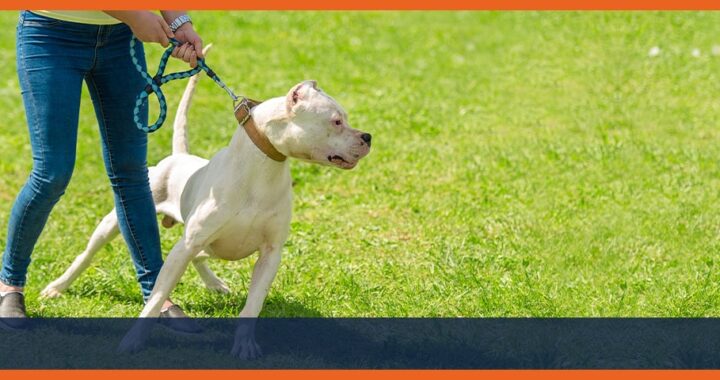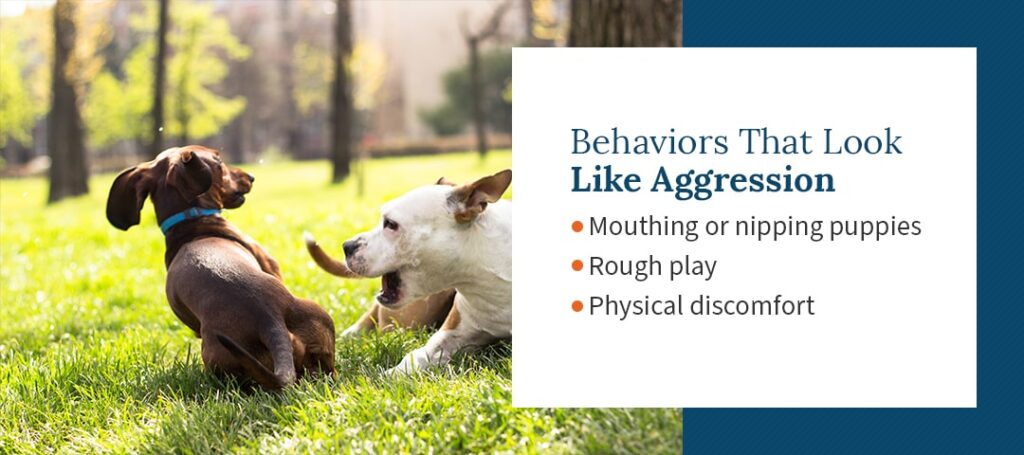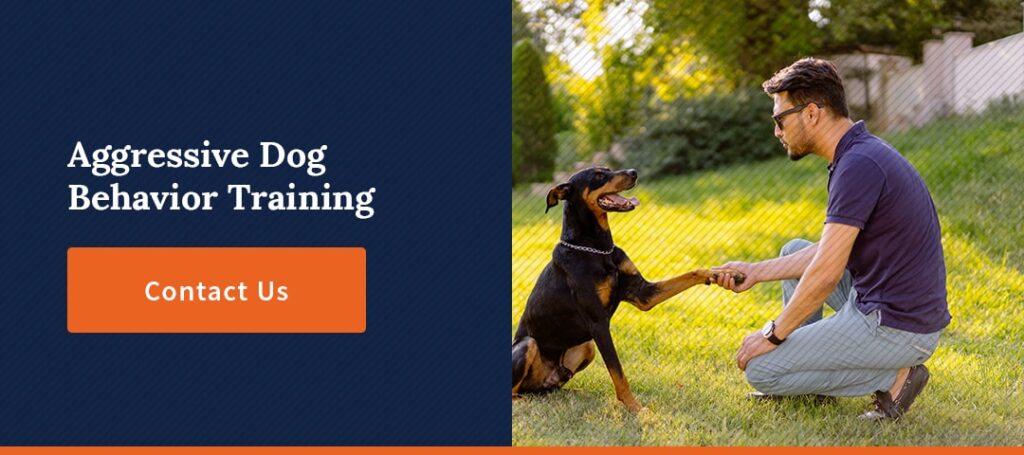Table of Contents
- What Is Dog Reactivity?
- What Is Dog Aggression?
- Behaviors That Look Like Aggression
- Behaviors That Sometimes Lead to Aggression
- Sign Up for Aggressive Dog Behavior Training
Aggression is one of the most common reasons dog owners seek professional help. It’s also very common to confuse an aggressive dog with one that is reactive. Learning the difference can help you appropriately deal with the issue at hand.
Aggressive dogs may be guarding territory, resources or another family member. They might also be frightened, frustrated, in pain or have a prey drive. In any of these situations, a dog can transition quickly from reactive to aggressive.
Learn more about the behaviors that can trigger aggression in your dog to help you prevent it.
What Is Dog Reactivity?
A reactive dog is one that is overactive or in a heightened state of arousal to stimuli. They may be in this state due to panic, irritation or a lack of socialization.
A dog constantly jumping, barking or pulling on the leash can stem from a lack of training. They may want to meet another dog but aren’t sure how to express themself correctly. They could also fear a human or another dog and want to frighten them off. For instance, a bad experience with a human could cause a dog to jump or pull and try to bite. For this reason, it’s essential to assess your dog’s intention.
If you have an otherwise happy dog who does well with other animals and shows a desire to go after another dog, they’re likely just overstimulated and excited. Puppies often fall under this category, which is why teaching them how to be patient is essential.
If you’ve never trained your dog or it’s your first time walking them on a leash, they’re likely just showing leash reactivity behavior. Professionals will work with your dog if it displays these behaviors. This way, they can learn to behave positively toward a leash so you can go on enjoyable walks with your furry companion.
What Is Dog Aggression?
Dog aggression is dangerous, hostile and destructive behavior toward a human or another animal. It’s commonly mistaken for reactivity and can be tricky to identify if the dog has not yet escalated.
In many cases, a dog displaying behaviors like snarling, lifting their lip or stiffening the body is communicating fear or anxiety. If pushed, they may bite, which is when you know a reactive dog has transitioned into aggressive.
Typical dog aggressive behavior includes:
- Muzzle punching or punching someone with their nose
- Snarling
- Snapping
- A bite that damages the skin
- A bite that causes a bruise
- A bite that causes puncture wounds
- Repeated bites
There’s typically some fear involved in aggressive dogs. If they lift their lip, growl, snap or lean forward to bark or back up as they bark, they are putting space between themselves and what they fear. When the person or animal backs up, it reinforces the dog’s behavior, as they believe when they act this way, the source of their fear will go away.
That’s not to say you should ignore your four-legged friend when they growl or snarls their teeth. It’s essential to note these signals, as they are a dog’s way of letting you know they feel anxious or afraid. If you think your companion could be displaying reactive or fear-based aggressive behaviors, it’s helpful to find a positive reinforcement trainer who can teach strategies to keep your dog comfortable in triggering situations.
If your dog lashes out by chasing someone or even jumping and attempting to bite, this isn’t normal behavior. In this case, the dog’s owners should contact a trainer to help them work on aggression. Through aggressive dog behavior training, professionals can provide tips for navigating triggers and preventing a hostile situation.
Behaviors That Look Like Aggression
Listed below are some of the dog behaviors commonly mistaken for aggression:
- Mouthing or nipping puppies: When puppies play with their owners or other dogs, they might nip harder than they should. This behavior doesn’t stem from aggression but rather a puppy that is over-stimulated and needs a break.
- Rough play: Dog play is mock fighting and a form of normal canine interaction. Dogs learn this behavior from a young age and may become loud or appear aggressive while playing. As long as both dogs respect each other’s body language, the behavior is not aggressive and is an excellent activity for socialization and exercise.
- Physical discomfort: A dog who suddenly starts growling or snapping might actually be sick or in pain. As stated above, a vet should rule out any sudden, unexpected aggressive behavior to determine a medical cause.
Behaviors That Sometimes Lead to Aggression
Dog owners should be aware that dogs who display reactive, fearful or guarding behaviors can quickly become aggressive:
- Reactivity: Reactivity can stem from genetics, lack of socialization, a frightening experience or insufficient training. Reactive dogs usually have specific triggers, such as children, fast-moving objects or vehicles. They may suddenly feel trapped by their leash and attempt to escape. If a reactive dog approaches you, give them space rather than approaching or greeting them.
- Fight or flight: Fear is the most common reason for aggressive dog behavior. In situations where dogs cannot flee from the thing scaring them, they may fight to protect themselves. Watch for body language that might indicate fear, such as shaking, pacing, whining, barking or cowering.
- Resource guarding: Dogs usually protect things they deem most worthy, such as toys, food, sleeping areas and even people. This is an evolutionary instinct, as their ancestors were forced to protect their resources to survive in the wild. Teaching dogs behaviors like “leave it” or “off” can help put an end to this behavior. Aggressive dog behavior training by professionals can also help your dog learn these commands to keep you in control of a situation before it turns hostile.
- Leash reactivity: Leash-reactive dogs grow, bark or lunge toward things that make them anxious or fearful. These triggers can be specific, such as children, men, women or male or female dogs. Dogs that display these behaviors are trying to prevent a fight by putting distance between themselves and the threat or by scaring it away.
Sign Up for Aggressive Dog Behavior Training
Whether you have an aggressive or reactive dog, the professional dog trainers at Off Leash K9 Training can help you train your dog and put you back in control. Our aggressive dog behavior training package teaches obedience and manners while helping your dog build confidence and trust every step of the way. We offer private one-on-one training, so your dog will get the individual attention they need. Aggressive behavior will reduce after eight private lessons as your dog learns commands and get used to other canine friends.
Learn more about our dog aggression training package, or contact us today with any questions.



